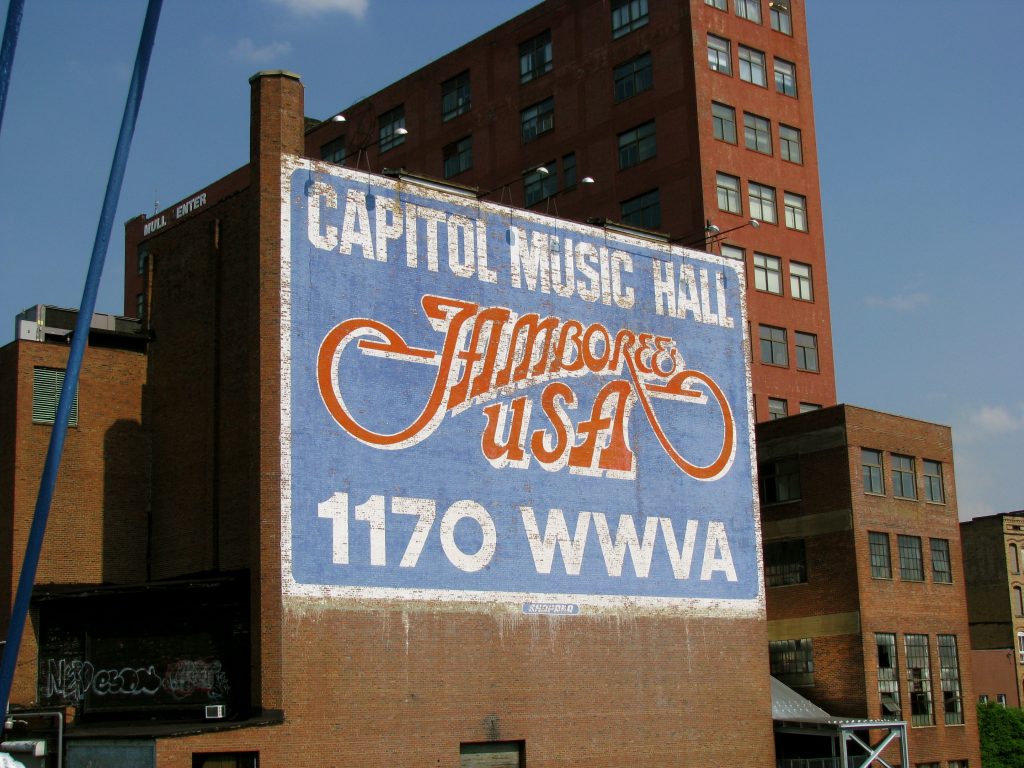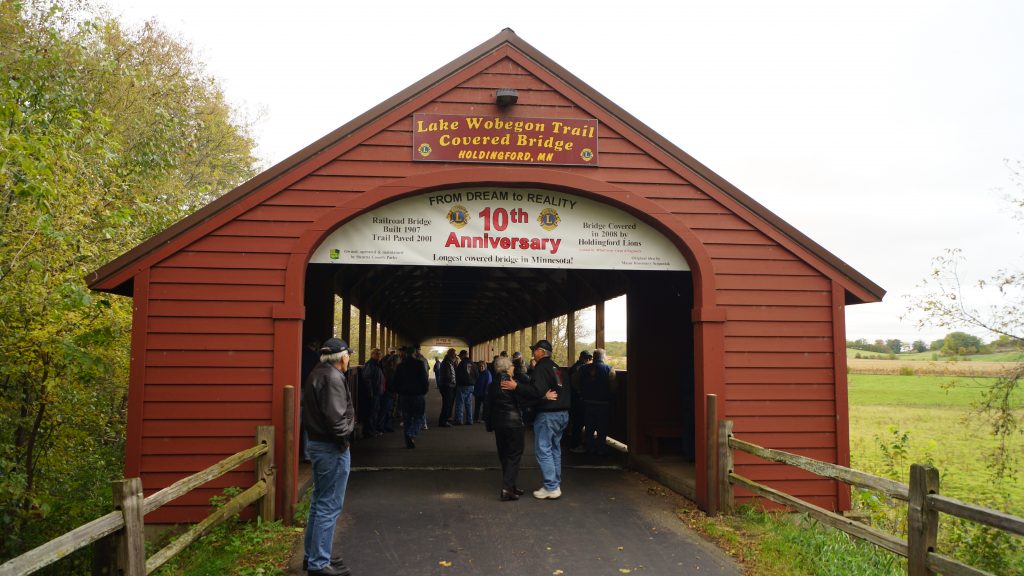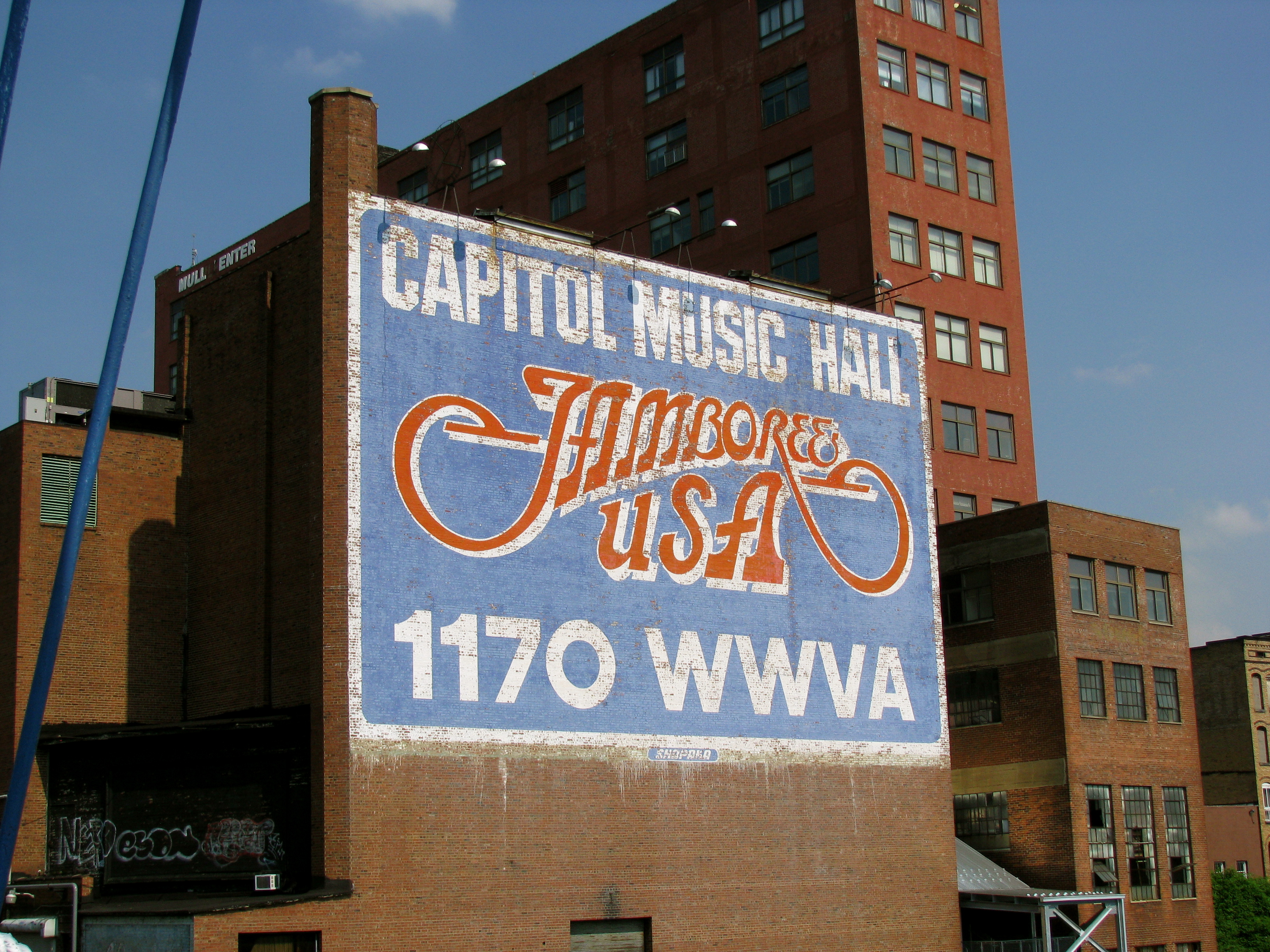
There are a few different ways to tell if you’re in Appalachia. If you’re the official type, you can check if your county is on a map of the Appalachian Regional Commission. If you’re more of a naturalist, you can look at the geology of the Appalachian Mountains or search for wildlife native to the region. Personally though, my favorite method is to turn on the radio and listen.
On a clear day, I know I’m back home when I get reception for WOUB, the NPR station affiliated with Ohio University that serves much of Appalachian Ohio. Providing a mix of national news, regional stories, and an eclectic cultural program of Americana and indie rock, WOUB perfectly encapsulates the part-Midwestern, part-Appalachian mix of the Mid-Ohio Valley. When the signal switches over to WOSU in Columbus or WKSU in northeast Ohio, I know I’ve left the safe bounds of home for foreign territory.
Even if one doesn’t follow the radio signal theory of Appalachian borders, it’s difficult to deny the medium’s importance in the region. In a world where information is increasingly hidden behind paywalls and ideological silos, the community radio station represents one of the last public forums, providing free, locally rooted news accessible to anyone with a receiver. Throughout its history, that position has placed radio at the forefront of defining Appalachia.
Do you ever turn on NPR, forgetting what day it is, and that it's all banjos all Sunday every Sunday around here?
— Alison Stine (@AlisonStine) October 6, 2019
The history of Appalachian radio extends back to the earliest days of broadcasting. The first commercial radio station in America was launched in Pittsburgh, where the Westinghouse Electric Company started a broadcast that developed into the still-operational KDKA-AM to report on the 1920 presidential election. A flurry of stations followed as the US went from one radio station in 1920 to 556 three years later. By the 1930s, 83 percent of American households had a radio.
An Appalachian standout from this early period was WWVA, started in Wheeling, West Virginia in 1926. Armed with an extremely powerful 50,000-watt transmitter, WWVA reached 17 states and six Canadian provinces. In 1933, the station started airing the Saturday night program for which it became nationally known: the Wheeling Jamboree. Featuring live country music performances by America’s top artists, the Jamboree quickly made WWVA the top-ranked CBS affiliate station in the U.S. and has continued for more than 80 years, making it the second longest-running American radio program after Nashville’s Grand Ole Opry on WSM.
The Jamboree‘s influence can be felt throughout modern country music. West Virginia native Brad Paisley got his start on the program, and it purportedly inspired Bill Danoff, who listened to the Jamboree growing up in the 1950s, to write “Take Me Home, Country Roads” about West Virginia, despite never setting foot in the Mountain State.
A 1959 advertisement for the Wheeling Jamboree featuring country legend Doc Williams
Like the rest of America, Appalachian radio received a major facelift in 1967, when President Johnson signed a law forming the Corporation for Public Broadcasting (CPB). Charged with helping local affiliates create diverse, non-commercial programming in the public interest, the CPB would go on to form the television-focused Public Broadcasting Service (PBS) in 1969 and National Public Radio (NPR) in 1970.
The decentralized broadcast structure put in place under NPR has provided an important space to talk about regional identity. Although NPR produces and distributes content aired on most of its affiliates, each member station is independent and exercises considerable control over its programming. Hence, a southeast Ohio station might air fiddle music all day Sunday while a New York one plays jazz. That independence also means stations are financially dependent on local communities—hence the unending Fall membership drives and cool socks.
Most importantly, local dependence gives NPR stations an incentive to cover local issues and produce regional programming. As illustrated by nationally syndicated programs like Minnesota Public Radio’s Prairie Home Companion or West Virginia Public Broadcasting’s Mountain Stage, this programming can define what it means to be from an area to local and national audiences alike. Programs like WVPB’s Inside Appalachia have also expanded the local news focus into a regional perspective.

Public radio isn’t limited to NPR stations, though. Some of the most interesting examples of radio’s role in regional identity can be heard on Appalachia’s independent community radio stations, the most prominent of which is Appalshop’s Mountain Community Radio (WMMT) based in Whitesburg, Kentucky. Broadcast throughout the central Appalachian coalfields, WMMT provides a forum to both celebrate regional culture and challenge conceptions of what it means to live in Appalachia. For example, while the station is well-known for broadcasting traditional Appalachian folk music, it also serves its listening area’s large (and predominantly out-of-state African-American) prison population by hosting a hip-hop hour and a call-in show for inmates’ loved ones to speak to them over the radio.
Be it through connecting far-apart family members or providing a common cultural experience, community radio stations have helped bring Appalachian people together for almost a century. As this expatalachian can personally attest, the ability to stream radio from the region can play an important role in remaining connected to home in an increasingly mobile world. As we continue to think about what it means to be Appalachian both in and outside the region, we would do well to remember and support these pillars of community.
Click here to support your local NPR station.
Subscribe to The Patch, our newsletter, to stay up-to-date with new expatalachians articles and news from around Appalachia.
Nicholas Brumfield is a native of Parkersburg, WV currently working in Arlington, VA. He is also a proud sustaining member of WOUB Public Media. For more hot takes on Appalachia and Ohio politics, follow him on Twitter: @NickJBrumfield.
This article has been changed to remove a sentence that implied the Wheeling Jamboree is no longer produced. It currently records live shows on a quarterly basis and airs archived recordings every Saturday night on WWOV.


